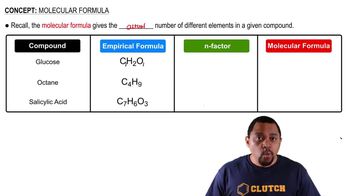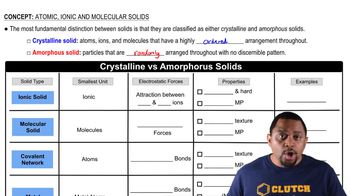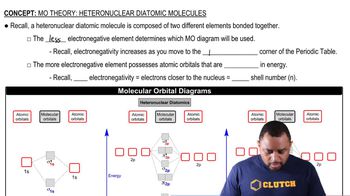Here are the essential concepts you must grasp in order to answer the question correctly.
Molecular Formula
A molecular formula represents the number and types of atoms in a molecule. For n-decane, CH3(CH2)8CH3 indicates it consists of 10 carbon atoms and 22 hydrogen atoms. This formula provides insight into the molecule's structure and composition, which is essential for understanding its properties and behavior.
Recommended video:
Determining Molecular Formulas
Polymers
Polymers are large molecules made up of repeating structural units called monomers, linked together by covalent bonds. Polyethylene, for example, is a polymer formed from the polymerization of ethylene monomers. In contrast, n-decane is a simple hydrocarbon with a fixed number of atoms and does not consist of repeating units, thus classifying it as a non-polymeric substance.
Recommended video:
Crystalline vs Amorphous Solids
Distinction Between Polymers and Small Molecules
The primary distinction between polymers and small molecules lies in their size and structure. Polymers are typically long chains of repeating units, which give them unique physical properties, such as elasticity and strength. Small molecules, like n-decane, are discrete entities with specific molecular formulas and do not exhibit the same extensive chain-like structure, leading to different chemical and physical characteristics.
Recommended video:
Heteronuclear Diatomic Molecules
 Verified step by step guidance
Verified step by step guidance

